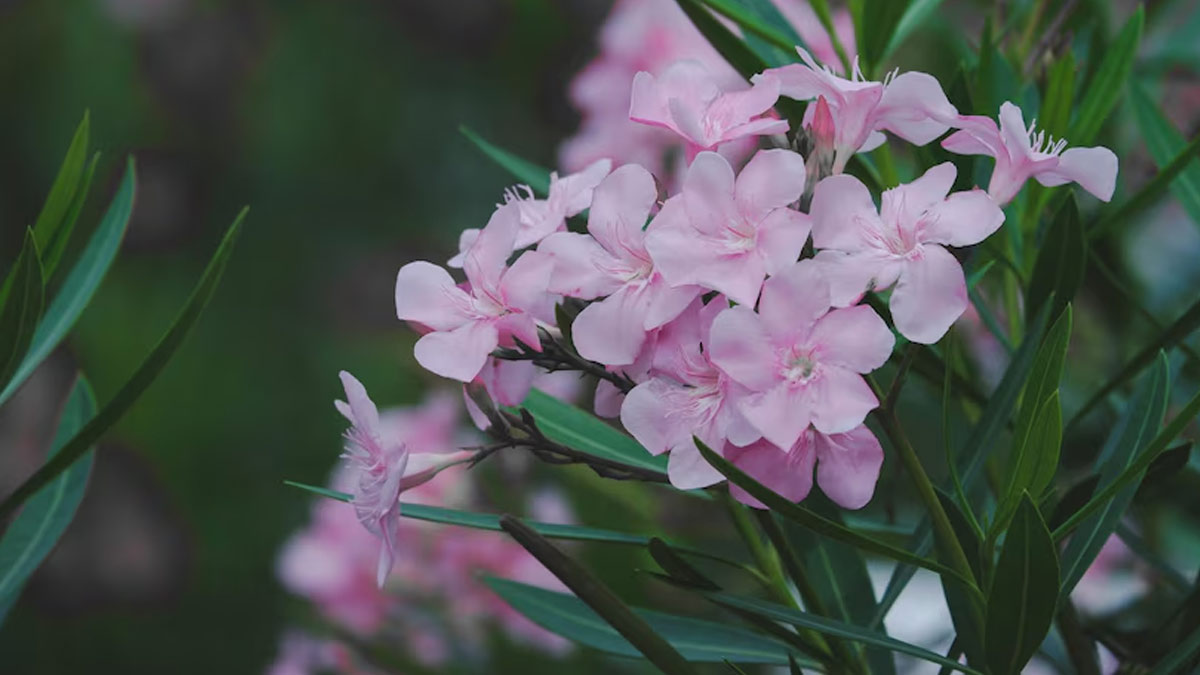
In a bizarre incident, a 24-year-old woman died after accidentally chewing oleander leaves in Kerala. She experienced discomfort sooner followed by multiple episodes of vomiting. Later the same day, she fainted at the airport. After hospitalisation, she passed away two days later. After her death, two government run temples boards of Kerala banned the use of oleander flowers. They cannot be used in food offered to the deity and prasad to devotees.
Table of Content:-
What Is Oleander Plant?
What are these oleander flowers which are poisonous and also offered in temples? Oleander, commonly known as rosebay, is a flowering shrub often used for landscaping and ornamental purposes. The scientific description of Oleander is termed as Nerium oleander. Oleander is an attractive shrub or small plant that thrives in tropical and subtropical regions.

Surprisingly, this plant is also used for medicinal purposes. According to a study by the National Institute of Health, oleander is used to treat rashes and other skin disorders. To understand more about oleander and how it is poisonous, OnlyMyHealth team interacted with Dr Kiran Dhake, Corporate Wellness Physician, Mumbai.
Dr Dhake said, “Human mortality associated with Oleander ingestion is generally low. Nevertheless, there are certain cases reported of unintentional consumption that led to loss of life.”
Explaining the benefits of oleander, Dr Dhake said, “Ayurvedic medicinal literature mentions the tree bark of the plant has therapeutic properties—antibiotic, cardiac protective, and used for the treatment of certain skin diseases. Despite these beneficial properties, the plant is also widely known to contain several toxic compounds and is historically considered as poisonous plant species.”
Also read: Sweet Poison: Expert Reveals Why Sugary Processed Foods Are Harmful
It is very essential to understand the favourable and toxicological properties of the Oleander plant and its potential catastrophic effect on humans.

As per Dr Dhake, oleander tissue contains conducive enzymes that have cardiotonic properties, that is, favourable for the heart. These therapeutic proper were recognised during antiquity However, they are still often misused and exploited as a tool for suicidal activities in many regions of the world.
Explaining the toxicity of the plant, Dr Dhake said, “Parts of plants containing toxins are flowers, leaves, stems, and twigs. These parts contain cardiotoxic and gastro-toxic substances that have immediate effects on the heart and gastrointestinal system.”
Symptoms of Toxicity
Nervous system: Weakness, headache, fainting, confusion, dizziness, disorientation.
Heart: Breathlessness, irregular heart rhythm, low heart rate, low blood pressure.
Gastrointestinal: Nausea, vomiting, abdominal pain, passage of watery stools.
Skin: red coloured rashes.
Blurred vision and other vision disturbances: Experiencing halos around objects.

Also read: Woman Lands In Hospital For Lead Poisoning Due To Ayurvedic Medicine: What We Know
According to some scientific papers, death may not be a common consequence but the majority of patients will experience cardiac and gastrointestinal symptoms.
Dr Dhake further said, “Oleander toxicity need not occur by direct ingestion or contact, it could also occur after skin application. Toxins reach blood circulation via small blood channels of the skin and exert their effect on various body systems.”
Conclusion
Before embarking on the final decision for the detoxification protocol during an acute event of toxicity, it is vitally important to identify vital clues of using unconventional therapies and understand the practices of Oleander plants use, in various health situations in certain parts of the world.
Also watch this video
How we keep this article up to date:
We work with experts and keep a close eye on the latest in health and wellness. Whenever there is a new research or helpful information, we update our articles with accurate and useful advice.
Current Version